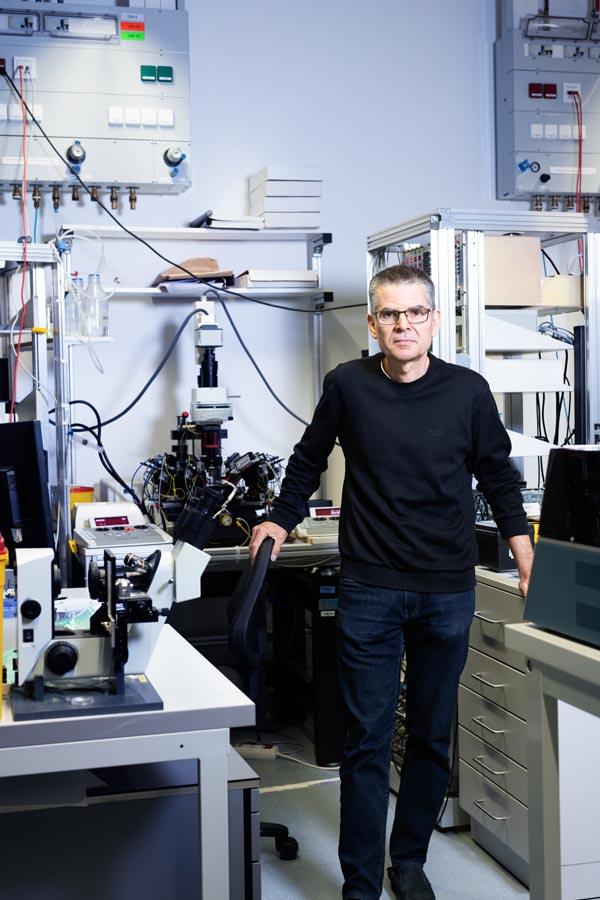November 8, 2021
Seeburg Prize awarded to Peter Jonas
Professor Peter Jonas is being honored for his groundbreaking achievements in neuroscience.

Peter Jonas, professor of physiology and neuroscience at the Institute of Science and Technology (IST) Austria, receives the Peter Seeburg Integrative Neuroscience Prize of the Society of Neuroscience. Jonas is being honored for his outstanding research achievements, in particular for his significant contribution to the understanding of synaptic signal processing at the molecular and cellular level.
Understanding the function of the brain is one of the greatest challenge in the 21st century. The human brain consists of nearly 100 billion neurons that communicate with each other through 10,000 synapses per cell. Professor Peter Jonas seeks to understand how these synapses shape higher-order computations in the mammalian brain. His focus has progressed in a bottom-up manner, from the level of receptors and channels, to synapses, to circuits and in vivo recordings.
In order to communicate, neurons use transmitters such as glutamate and gamma-aminobutyric acid (GABA). Working with Peter Seeburg early in his career, Jonas discovered glutamate receptors on interneurons that are permeable to calcium and elucidated the underlying molecular mechanisms. Later in his career, he found that spinal cord interneurons release two fast transmitters and characterized adult-born neurons in the mammalian brain. He also provided evidence of analog coding at the mammalian cortical synapse and discovered connectivity motifs in the hippocampus. He is particularly well-known for his work in interneurons that express the calcium-binding protein parvalbumin and has elucidated the molecular and subcellular mechanisms of their fast signaling. Jonas also developed new techniques and revolutionized the recording of activity at various highly specialized locations in the brain. He couples experimental with theoretical expertise, combining cutting-edge technologies with quantitative modeling to rigorously test his hypotheses and develop new concepts.
For his contributions to the understanding of synaptic communication and information processing in neuronal microcircuits, Professor Jonas has now been awarded the Peter Seeburg Integrative Neuroscience Prize. The prize recognizes outstanding advances in the understanding of executive brain functions and cognitive processes. It is presented for the first time at this year’s annual meeting of the Society for Neuroscience (SfN) and comes with $100,000 prize money endowed by the Schaller-Nikolich Foundation. The prize is named after Peter Seeburg (1944–2016), who was a leading neuroscientist and pioneer in molecular biology.
About the Person
Peter Jonas, born in Germany, completed his medical studies at the University of Giessen in 1987. From 1988 to 1989 he was a postdoc at the Physiological Institute of the University of Giessen, and from 1990 to 1994 a research assistant in the group of Nobel Prize winner Bert Sakmann at the Max Planck Institute for Medical Research in Heidelberg. After his habilitation in 1992 at the University of Heidelberg and a further station at the TU Munich as associate professor, he was appointed full professor and head of the Physiological Institute at the University of Freiburg from 1995 to 2010. In 2010, Peter Jonas became the first neuroscientist to be recruited to IST Austria.



